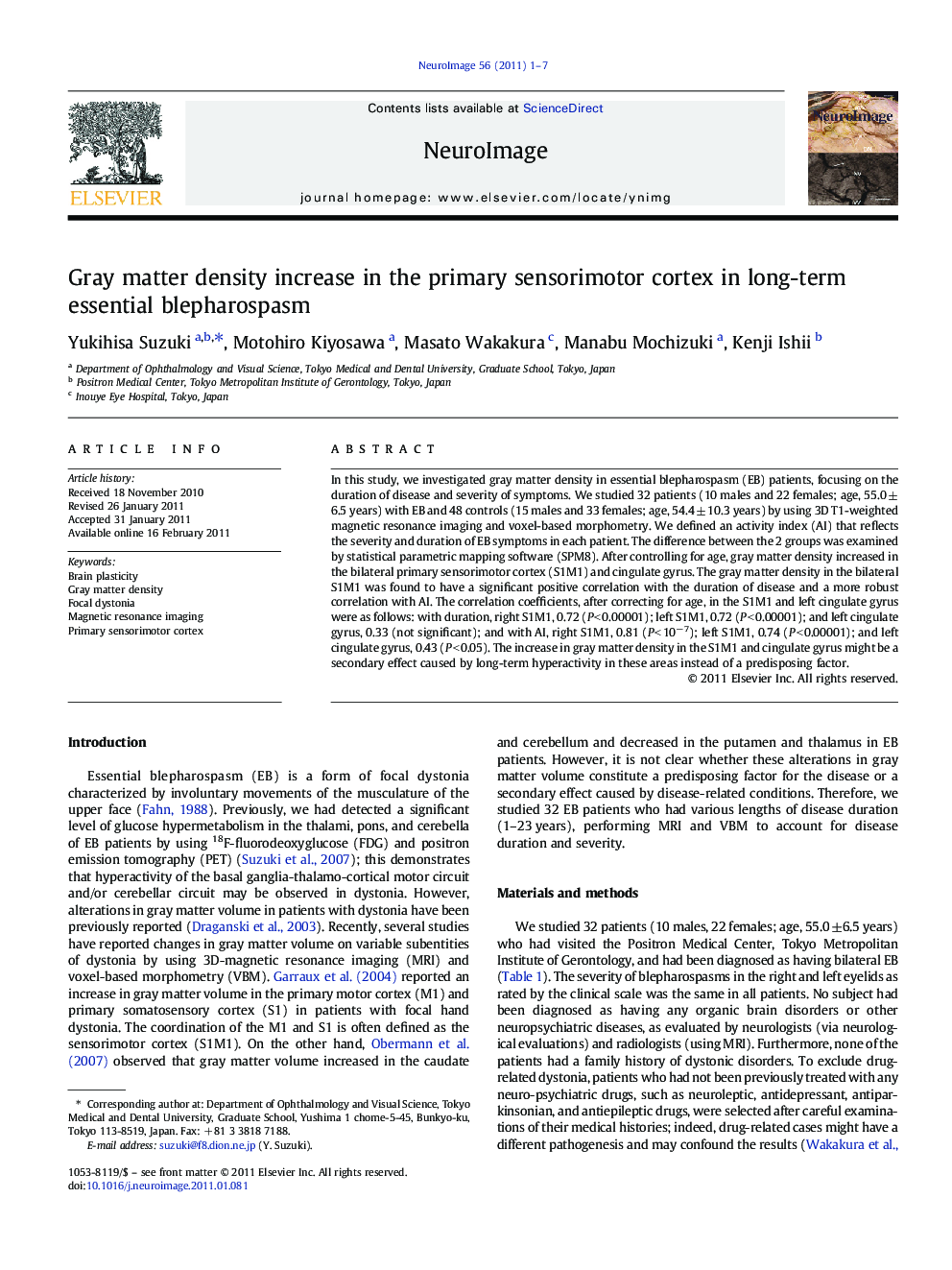| کد مقاله | کد نشریه | سال انتشار | مقاله انگلیسی | نسخه تمام متن |
|---|---|---|---|---|
| 3072087 | 1188744 | 2011 | 7 صفحه PDF | دانلود رایگان |

In this study, we investigated gray matter density in essential blepharospasm (EB) patients, focusing on the duration of disease and severity of symptoms. We studied 32 patients (10 males and 22 females; age, 55.0 ± 6.5 years) with EB and 48 controls (15 males and 33 females; age, 54.4 ± 10.3 years) by using 3D T1-weighted magnetic resonance imaging and voxel-based morphometry. We defined an activity index (AI) that reflects the severity and duration of EB symptoms in each patient. The difference between the 2 groups was examined by statistical parametric mapping software (SPM8). After controlling for age, gray matter density increased in the bilateral primary sensorimotor cortex (S1M1) and cingulate gyrus. The gray matter density in the bilateral S1M1 was found to have a significant positive correlation with the duration of disease and a more robust correlation with AI. The correlation coefficients, after correcting for age, in the S1M1 and left cingulate gyrus were as follows: with duration, right S1M1, 0.72 (P < 0.00001); left S1M1, 0.72 (P < 0.00001); and left cingulate gyrus, 0.33 (not significant); and with AI, right S1M1, 0.81 (P < 10−7); left S1M1, 0.74 (P < 0.00001); and left cingulate gyrus, 0.43 (P < 0.05). The increase in gray matter density in the S1M1 and cingulate gyrus might be a secondary effect caused by long-term hyperactivity in these areas instead of a predisposing factor.
Research highlights
► Gray matter density (GMD) increased in essential blepharospasm.
► GMD increased in the bilateral sensorimotor cortex (S1M1) and cingulate gyrus.
► GMD in the S1M1 has a positive correlation with duration, and activity index (AI).
► GMD increase may be a secondary effect caused by a long-term hyperactivity.
Journal: NeuroImage - Volume 56, Issue 1, 1 May 2011, Pages 1–7